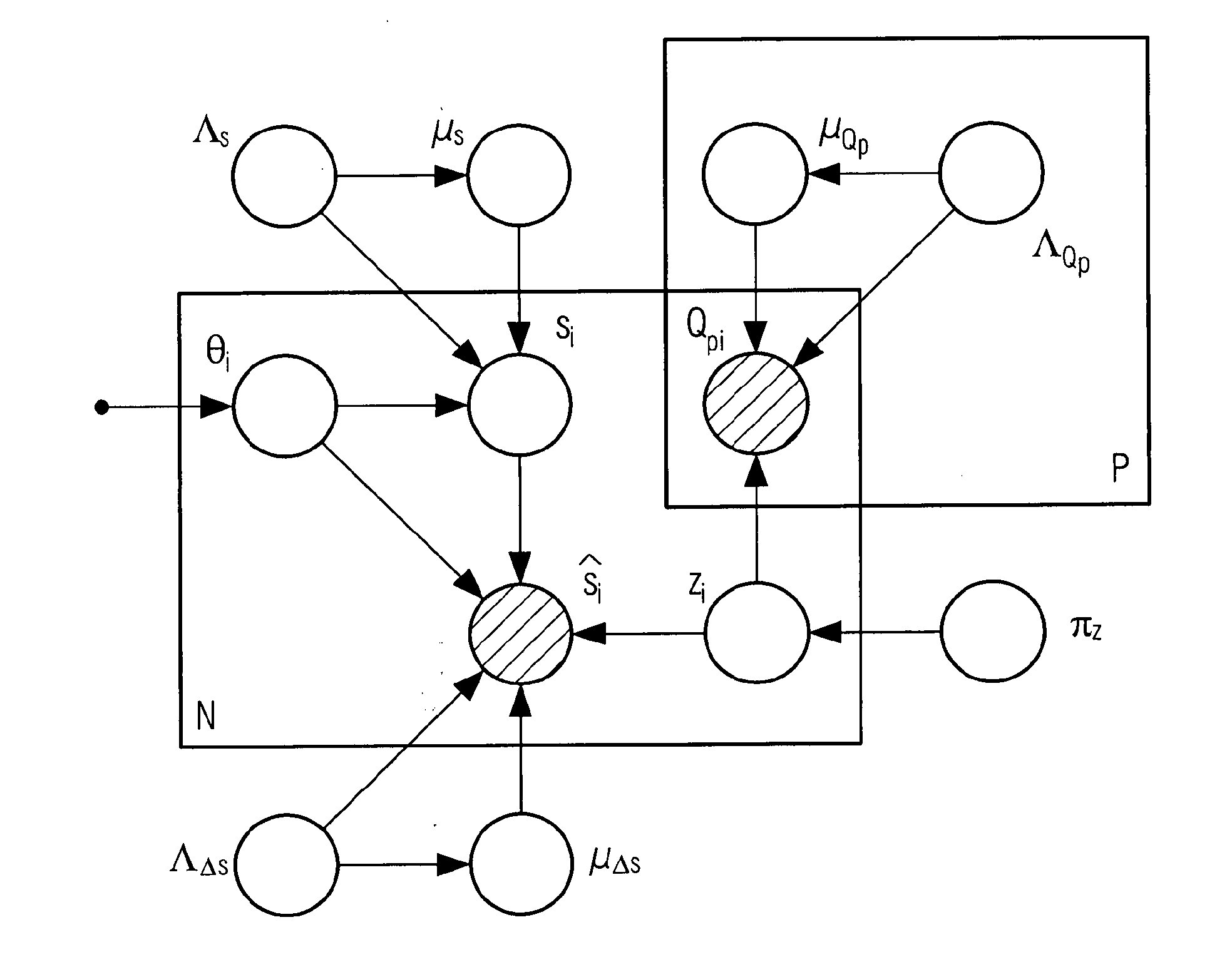Estimation of reliability in speaker recognition
a speaker recognition and reliability technology, applied in speech recognition, speech analysis, instruments, etc., can solve problems such as channel mismatch, and speaker recognition system unreliabl
- Summary
- Abstract
- Description
- Claims
- Application Information
AI Technical Summary
Benefits of technology
Problems solved by technology
Method used
Image
Examples
Embodiment Construction
[0116]FIG. 1 shows a Bayesian Network used for example in the document “A probabilistic measure of modality reliability in speaker verification”, published in Acoustics, Speech and Signal Processing, 2005, Proceedings, (ICASSP '05), IEEE International Conference in 2005 by J. Richiardi et al. In it, empty nodes denote hidden variables, shaded nodes denote observed variables and a small solid node denotes a deterministic parameter. A node or group of nodes surrounded by a box (called a plate) labelled with N indicates that there are N nodes of that kind, for example N trials. The arcs between the nodes point from the parent to the children variables, representing the conditional dependencies between parents and children. Herein a parent variable corresponds to a variable on which a corresponding variable called children variable depends. The expressions used in FIG. 1 are known e.g. from the Bishop reference cited previously.
[0117]The variables used in FIG. 1 are the following. si, i...
PUM
 Login to View More
Login to View More Abstract
Description
Claims
Application Information
 Login to View More
Login to View More - R&D
- Intellectual Property
- Life Sciences
- Materials
- Tech Scout
- Unparalleled Data Quality
- Higher Quality Content
- 60% Fewer Hallucinations
Browse by: Latest US Patents, China's latest patents, Technical Efficacy Thesaurus, Application Domain, Technology Topic, Popular Technical Reports.
© 2025 PatSnap. All rights reserved.Legal|Privacy policy|Modern Slavery Act Transparency Statement|Sitemap|About US| Contact US: help@patsnap.com



